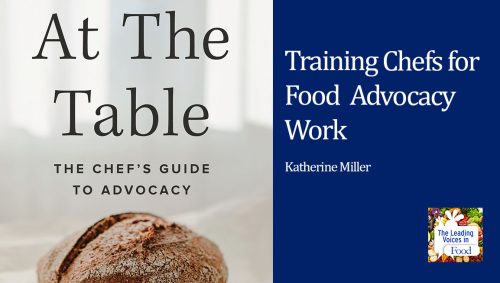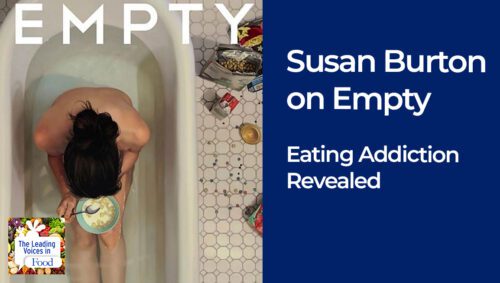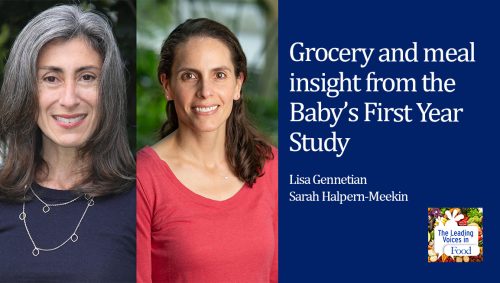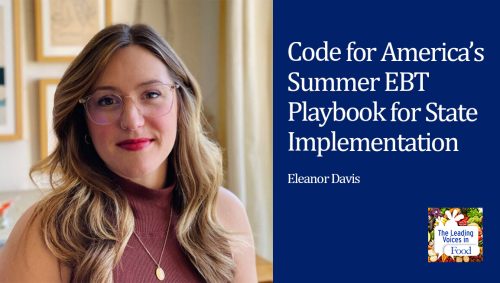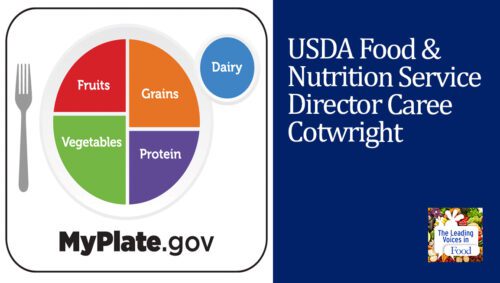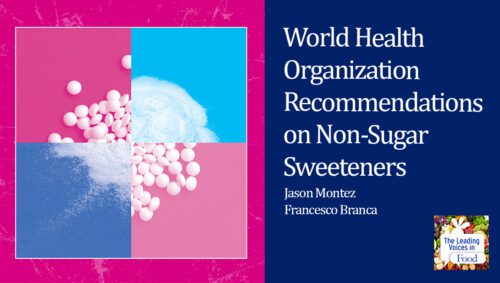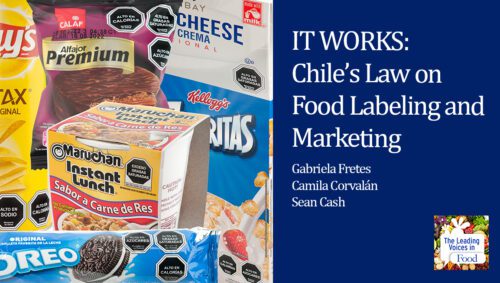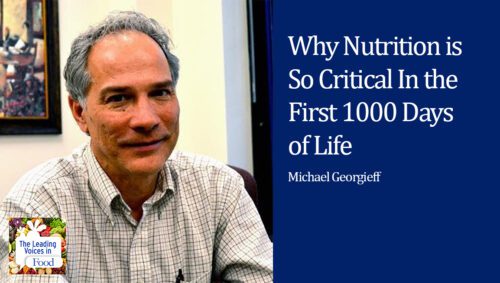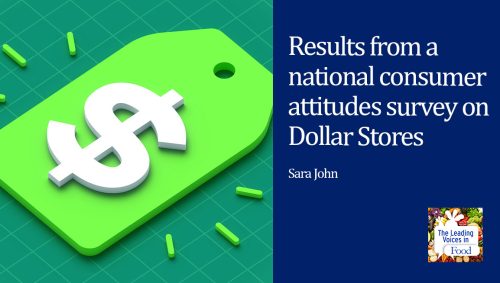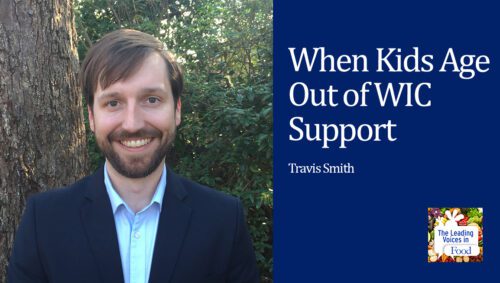The Leading Voices in Food
E46: Charlie Cart’s Carolyn Federman on Food, Fun, and Classrooms
Americans have become distant from their food. It was once the case that people either grew food themselves or perhaps, just one step away from it, buying food from farmers or from markets served by local farmers, but boy, is it ever different now. Food is processed, it’s shipped long distances, and people are less in touch with how food is created, how to cook it, and more. There are some impressive efforts underway to help correct this problem. Some of the more impressive ones that focused on children such as the work of Carolyn Federman, the inspiration behind a highly innovative program known as Charlie Cart.
Subscribe: Apple Podcasts | TuneIN | Google Podcasts | SoundCloud | PocketCasts | Radio Public
Tags: Chefs & Food Writers | Child Development & Nutrition | Childhood Obesity | Children Food Preferences | Diet & Nutrition | School Meals |

Carolyn Federman is the founder and executive director of the Charlie Cart project, a nonprofit program designed to scale food education in the classroom. Carolyn has worked for more than a decade to transform the food system through educational programming, school lunch reform and activism. She served as development director and executive director of Alice Waters Edible Schoolyard Project, formerly known as the Chez Panisse Foundation, and consulted for British chef Jamie Oliver’s Foundation. She’s done other important work on this at the University of California at Berkeley, and at other places.
Interview Summary
Carolyn, please tell us about Charlie Cart and how it works.
Sure. The Charlie Cart project is a food education platform. We provide tools, curriculum, training and support for organizations like schools and libraries to implement hands-on cooking lessons right in the classroom. To give you a visual, imagine an art cart from your high school days. The teacher rolls it into the room, they unpack the supplies, and then suddenly, the students’ workstation, your desk, is transformed into an art studio. With the Charlie cart, the room becomes a prep kitchen. Students are working together to read and follow a recipe. They’ll mix, measure, peel, grate. They learn to use all of the essential kitchen tools, and they’re getting hands on exposure with fresh foods.
Each recipe is part of a lesson plan. It’s a full curriculum that’s tied to math, science and English language arts, so teachers can maximize their instructional time. Then all of these components are tied together through our educator training. So when an organization joins the Charlie Cart fold, we train their existing staff to lead the lessons themselves, and our goal is to give educators the confidence to lead hands-on cooking lessons, and empower that organization to create a sustainable program.
Highly innovative. So give us an example of Charlie Cart in action. What might be an example of a lesson plan or something students would actually do?
The teacher would roll the cart into a classroom, and you can imagine as with the edible school year, there might be three workstations where the students have pushed their desks together, and maybe they have covered those desks with butcher paper, so it actually looks like a prep table. The lessons have a recipe that the children would be following. The teacher would give an introduction, so maybe they would be making, let’s say, hand pressed tortillas with avocado.
The teacher would give an introduction about the ingredients. Maybe they’ll talk a little bit about corn, and the curriculum actually has a through line of corn so that every season starts with a corn lesson and the students … If they go from kindergarten through fifth grade with the curriculum, they learn about popcorn, all the way to corn syrup by making homemade ginger ale at the end in fifth grade. The teacher might introduce how corn is processed and made into the flour that they’re using to make the tortillas, and then the students would sit down at their tables and actually follow the recipe to make the tortillas, and then the teacher would cook it at the cart.
Let’s talk about how your experience led you to Charlie Cart. You’ve done a lot of work on food system change, you’ve done direct program and you’ve done policy. You’ve done advocacy. What made you come to the idea of Charlie Cart, and how did all that experience become important?
The idea really grew out of need. I was doing a lot of volunteer cooking in my kids’ classrooms and found that I would done a lot more if I had a centralized place to keep all the equipment. My kids’ school just happens to be on a big hill, so I had to lug all of these bags of gear up the hill and then go back down to my car and lug more, and I found that really frustrating. I asked a friend to help me design something where we could warehouse all of the equipment, and we would be able to … It would just be much easier for me to conduct lessons, and then it turned out that a lot of other people had that same need. The project that really influenced this from all of my work was when we worked on school lunch reform. I was at the Shape and East foundation, and we’ve transformed the school lunch program with Ann Cooper at Berkeley Unified School District. There were a couple of pieces that really stood out about that project.
Firstly, just understanding that kids have little to no agency when it comes to what they eat. The cafeteria is a place where you see clearly all of the outside forces making decisions for kids about their food, and corporations and their marketing dollars, and racial and economic inequality, politics. I mean, I don’t need to tell you Kelly, because you’re so familiar with this, but they’re up against an avalanche. The other piece I took away from that experience is that no matter what changes you implement, nothing can really move forward without the buy-in from students, parents, and administrators. So to build that buy-in, you have to understand the region, the economy, the culture, and the constituency. For that reason, the work really needs to come from within the community itself. There’s no one size fits all approach. If folks want to implement food education, they need the tools and support to do it. So-
Give us a sense of how the idea is spreading, how many Charlie Carts are there out there and are you happy with the momentum?
Spreading really quickly. We have about 115 sites in 32 states, and yes, I am really happy with the momentum, it’s been really exciting to see. I’d say the variety of organizations has been the most surprising is just a hugely broad spectrum of folks that are coming forward and embracing food education programs.
I know that you’ve traveled to urban and rural schools, to libraries, food banks, and they’re all using Charlie Cart to teach kids about foods. You mentioned being surprised by the diversity of places where the cart is being used. Are there other things that you’ve seen that have surprised you?
Yeah, so as I was saying about the variety of organizations, that’s been a huge surprise, and as you mentioned, the geography; just some of the … What I would have imagined to be unlikely places talk, Alaska, Pine Bluff, Arkansas and kind of everything … Everyone in between, and the types of organizations. Libraries, juvenile detention centers, boys and girls clubs. The Charlie Cart was designed for schools, but all of these organizations are coming forward and the embracing food education as a way to improve the health of their communities. That’s exciting to see. Then we see just really extraordinary people on the ground.
There was one time that comes to mind when we were in Waynesboro, Georgia. It’s kind of in the center of the state there, and the nutrition services director greeted us, and she was all dressed up. She looked as if she was going to a dinner party, her hair was perfectly done. She had this beautiful cashmere sweater on, and this giant colorful necklace. She sat down with us and explained how she had been working with the local farmers to get them to pick collard greens when they were younger so that they were sweeter, and the kids would be more likely to eat them. She’s out there in the community doing that kind of work, and then later in the afternoon, we ran into that nutrition services director again in the cafeteria. She was in the same outfit, only this time with a hairnet, and she’s running this giant machine that wraps up the leftover school meals so that they can be delivered to seniors and the local Meals on Wheels program.
Wow. What a wonderful story. So you’ve been working on this topic for more than a decade, and what sort of changes have you seen during that time?
I think you might agree with me that our industry is finally becoming mainstream. When I first started working for Alice Waters back in the early 2000s, very few people understood what she was trying to do with the Edible Schoolyard, and today there’s something like 10,000 school garden programs in the Edible Schoolyard network. There’s definitely a lot more public support for food education, and at the same time, there’s also been more willingness to collaborate across industries and agencies, which is something that was not really possible in the past.
We see this a lot with our sites. At the Low Country Food Bank in Charleston, South Carolina. They were trying to increase the amount of fresh food that they distributed to their clients, but they found that their clients were throwing the food away because it wasn’t familiar or they didn’t know how to prepare it. The food bank got a Charlie Cart, and they took it out to senior centers, and community centers and teen centers, and they created an entire food education program. Then two years later, the South Carolina State Library also purchased a Charlie Cart, and now they are working together with the food bank to offer those cooking lessons to an even broader audience.
And how do you see the Charlie Cart project having its greatest impact?
We’re trying support educators to be catalysts for culture change in their communities. I visited a school in Ranchester, Wyoming, where the principal told me how much learning to cook on the Charlie Cart meant to the kids at her school. She said that for some of those kids, dinner might be about crossing the street to the local liquor store for a candy bar. Now that they had a few lessons under their belts, they could fix themselves something to eat at home. If you think about it, just being able to look to prepare a simple meal for yourself. It’s so basic, it’s akin to literacy. I think it’s difficult to get by in this life without it. You know, we’re focused on empowering people like that principal, and just giving them the tools and support to make it happen.
So Carolyn, I know in addition to Charlie Cart that you published a cookbook for kids age eight and up called Favorites For New Cooks. Can you tell us a bit about that?
Yeah, thank you for asking about the book, Kelly. New Favorites is based on the fundamentals of the Charlie Cart curriculum, and it is simple recipes that don’t compromise on flavor. It’s using whole and processed foods, and it gives a lot of how-to visual instruction, so that kids can use the book on their own. I know that … I’ve seen firsthand how kids can gain so much confidence from cooking, and the book is really about building that confidence, creating positive associations with food, and hopefully getting them to try a few new foods along the way, which is the same thing that we’re doing with the Charlie Cart. Of course, the recipes are really good too.
If people among our listeners are interested in learning more about Charlie Cart or finding your book, or let’s say somebody wants to actually have Charlie Cart in their institution, how would they go about learning more?
They would go to charliecart.org, and they can contact us there and they can find the book there. The book is also on Amazon or at your local independent bookseller.
You know, I really admire this work Carolyn, because it’s very hands-on; of course, by definition. It’s got real geographic spread and spread across different kinds of institutions. What a difference it can make if a child learns to prefer different kinds of foods because of being introduced to them, to learn a little bit more about the story of food and where it comes from, and they learn how to handle it, cook it, et cetera. You can really make a big difference for the rest of their lives. So, congratulations for doing really inspired work, and thank you so much for joining us today.

